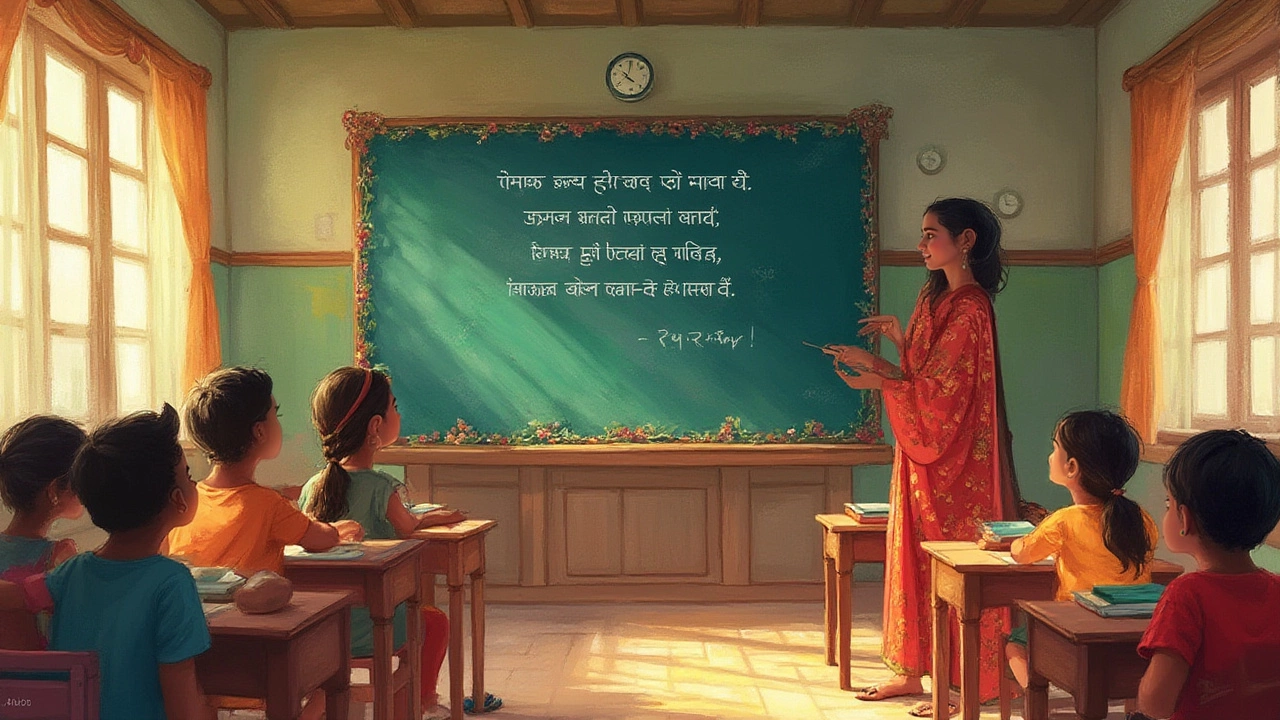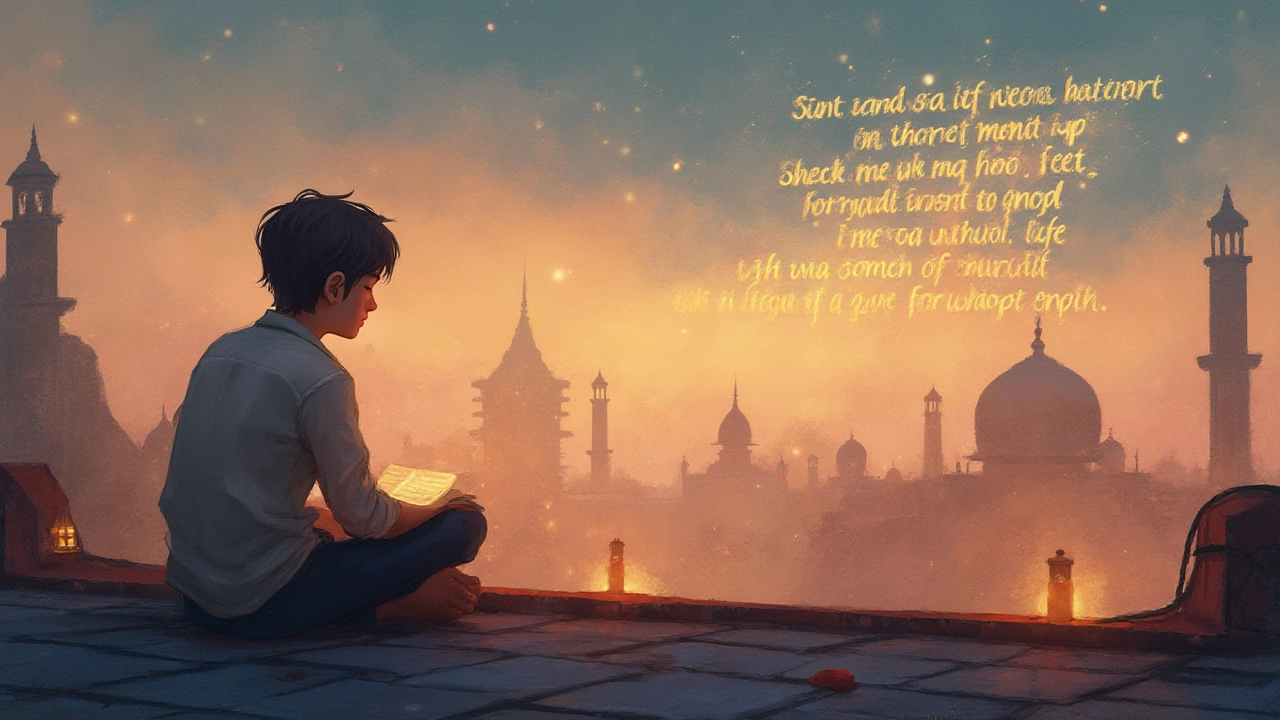
Admit it—there’s a secret power inside a short poem. You read those snappy four lines and, wham, it's like the feeling you get when a song lyric hits a little too close. That punchy vibe isn’t an accident. Four-line poems—so neat, so tiny—pack a twist of art and emotion that’s hard to ignore. But what are these little wonders called? Why do poets love to write them? And why do so many people share them on social media, scribble them on cards, or use them to sum up complicated feelings with a poetic mic drop? This deep dive will answer all those questions and show how much variety you can squeeze into just four lines.
Names for Four-Line Poems—and What Sets Them Apart
Let’s cut right to the chase—when someone asks “What are short 4 line poems called?” the most honest answer is “quatrains.” That’s the technical term for any stanza or poem made up of exactly four lines. So next time you spot a poem with four lines, you’re probably looking at a quatrain, even if it doesn’t rhyme or have a particular rhythm. But don’t let that simple answer fool you—there’s a lot to unpack here.
Quatrains have been around for centuries, and they pop up in English, French, Persian, and Chinese poetry. The format is everywhere—from nursery rhymes like "Roses are red / Violets are blue / Sugar is sweet / And so are you," to Emily Dickinson’s reflective musings, to Jawaharlal Nehru’s translations of Urdu rubaiyat. Now, not all four-line poems are created equal. You’ve got lyric quatrains (about personal feelings), narrative quatrains (that tell a story), even playful jingles and satirical verse.
Want some more variety? Here’s where it gets interesting. The quatrain isn’t the only game in town. Some poems use strict rules for rhyme and rhythm. Others are totally free-form. For example, there's the ‘rubai,’ a Persian poetic form often paired with deep philosophy or love themes. An ‘enclosed quatrain’ (ABBA rhyme scheme) sometimes lends a feeling of secrets or spirals; the ‘alternate rhyme quatrain’ (ABAB) feels more open, like a see-saw. And then there’s the famous ‘ballad stanza’ and the ‘Shakespearean quatrain.’ Each variation changes the experience.
You might also hear the word “clerihew”—but wait! That’s a four-line poem, sure, but it’s specifically funny and always about a person. Then there’s the “ruba'i,” another four-line form, especially in classic Persian and Urdu poetry, often with specific rhyme schemes and a philosophical twist. Which means: not every quatrain is made the same. Even haikus (which are three lines, not four!) sometimes get mistaken for quatrains by excited newbies.
Here’s a quick look at some classic four-line poem structures (rhyme scheme included):
| Form Name | Rhyme Scheme | Origin/Cultural Link |
|---|---|---|
| Quatrain | Varies (ABAB, AABB, ABBA, etc.) | Universal |
| Ruba'i | AABA | Persian/Urdu |
| Clerihew | AABB | English, humorous |
| Ballad Stanza | ABCB | English/British folk |
| Shakespearean Quatrain | ABAB | Elizabethan sonnets |
It gets even more fun if you try to spot these in poems you already know. Like hunting for poetic Easter eggs. So, if you share a favorite four-liner with your friends, you can sound extra smart just by dropping the word “quatrain,” or even more niche by naming the exact type.
Why Four Lines? The Secret Magic Packed Into a Short Poem
Four lines seems almost too short, but that’s why so many poets love it. The limit forces you to be sharp, honest, and sometimes playful. There’s no room for filler. If you look at song lyrics, Instagram captions, or even protest placards, they often use four lines—not five, not three. Why? Simple: it’s just enough to set up an idea, flip it, and land a killer last line. A four-line poem can carry a joke (the witty clerihew), a love note, or a whole story thanks to this compact structure.
People have always needed short forms of expression, especially for memory’s sake. Historical trivia? The quatrain was a favorite in ancient Persia and China for exactly this reason—four lines are easy to remember and repeat. Even today, studies show micro-poems are the most shared poetry forms on WhatsApp and Instagram. British schoolchildren memorize ballad stanzas, and Indian students grow up reciting four-line dohas. A cool bit: On Twitter, quatrains are the most commonly shared verse format, according to a 2023 content trend study.
There’s also a psychological reason you’re drawn to four lines. It’s enough for a setup and a punchline, a question and an answer, or a feeling and its echo. The pattern mimics conversation—think "call and response"—which makes it stickier in our minds. It’s why you’ll spot quatrains in wedding toasts, apology notes, or even bumper stickers. And if you’re writing for a distracted world, less is almost always more.
What about mood? A four-liner can feel romantic, chilling, snarky, or wise. There's no rule except honesty. Whether it’s a poem for a friend or something you keep just for yourself, four lines can say more than a whole page sometimes. Popular poets—from Rupi Kaur’s short, soulful free verse to classic forms in Ghalib’s ghazals—trust the shape to say exactly what matters, no more, no less.
Is it easy? Definitely not. Squeezing an idea into such a tiny space is a real challenge. But that’s exactly where the fun is. It’s like fitting your entire mood board into a single tweet, or capturing a feeling with four brushstrokes instead of a mural.

Famous Four-Line Forms: Classic Quatrains and Modern Twists
If you ask a fan of English poetry what a four-line poem looks like, you’ll hear about the quatrain, but there's so much more out there once you peek under the hood. For instance, classical Persian rubaiyat gave us Omar Khayyam's "Rubaiyat," which inspired everything from Fitzgerald’s translations to Bollywood lyrics. Each ruba'i uses an AABA rhyme pattern, twisting logic or feeling in the fourth line—think of it as a poetic turn or punch. Edward FitzGerald published more than 100 translations of Khayyam’s ruba’iyat in the 1800s, making it a worldwide hit.
British and American poetry lean hard into ballad quatrains and hymn stanzas. Look at Emily Dickinson: her tight, four-line poems (using the ABCB rhyme and short-long syllable style) helped set the rhythm for modern poetry. Many of her poems can be sung to the tune of "Amazing Grace"—try it sometime, it’s weirdly satisfying. Then there’s Shakespearean sonnets—each has three quatrains (ABAB) topped off by a two-line summary (called a couplet). Even today, songwriters and Instagram poets borrow those patterns to add rhythm and drama.
Now let’s zoom in on modern life. You’ll find four-liners in greeting cards, text messages, rap lyrics, and ad jingles—the kind that get stuck in your head for weeks. Some people invent their own four-line patterns as a challenge. On TikTok, there’s a whole community of “snack poets” crafting original quatrains for comedy and confession, often set to trending sounds. And look at microfiction platforms: in 2024, a viral contest challenged writers to tell a whole story in just 4 lines, pulling in nearly 300,000 entries across seven languages. Proof that these little stanzas never go out of style.
Want to spot a quatrain or ruba'i in real life? Just check out passages from these famous poets:
- Omar Khayyam (translated by Edward FitzGerald): “The Moving Finger writes; and, having writ, / Moves on: nor all thy Piety nor Wit / Shall lure it back to cancel half a Line, / Nor all thy Tears wash out a Word of it.”
- Emily Dickinson: “Because I could not stop for Death – / He kindly stopped for me – / The Carriage held but just Ourselves – / And Immortality.”
- Wendy Cope (a modern satirical poet): “Bloody men are like bloody buses— / You wait for about a year / And as soon as one approaches your stop / Two or three others appear.”
Notice how each uses the format for a slightly different purpose—philosophy, emotion, or biting humor. But the four-line engine keeps things tight and punchy. Whether it’s a classic stanza or an Instagram couplet with a twist, the four-line poem fits every mood and moment.
How to Write and Spot 4-Line Poems—and Make Them Stand Out
Okay, so you want to try your hand at a four-line poem? It’s fun, and honestly, a little addictive. Here’s a tip: Start small. Think of a feeling, moment, or scene you want to capture. Play with different four-line patterns, like ABAB (alternate rhyme), AABB (couplets), or even go rhyme-less if you’re feeling modern. If you’re stuck, try describing something with a twist in the last line—like a punchline or a surprise ending.
For rhyme and rhythm, read out loud as you write. If your stanza feels clunky, swap a word or shorten a line until it flows. A lot of poets keep a notepad or voice memo app handy for sudden quatrain ideas—those flashes often strike on the bus, in the shower, or after a particularly bad date. If you want to get noticed (say, on Instagram or Twitter), try pairing your poem with a photo or doodle. The four-line format works great as a caption.
Want to analyze or spot four-line poems in the wild? Look for these features:
- Does it feel complete on its own? A true quatrain often has a self-contained mood or idea.
- Notice the rhyme pattern—ABAB, AABB, ABBA, etc. It’s not mandatory, but rhyme gives the poem a musical feel.
- Check the meter—many traditional quatrains use “iambic tetrameter” and “iambic trimeter,” but don’t sweat it if you just want to write from the heart.
- Pay attention to the last line—the best ones give a twist, joke, or unexpected emotion. It’s your mic drop.
If you’re teaching kids or just want some practice, try a few challenges. Write a quatrain about your favorite food. Turn a recent news headline into a four-line poem. Or describe a pet, a moment of nostalgia, or even a headache—anything works in four lines. Challenge yourself with different rhyme schemes to stretch your creativity. If you’re feeling ambitious, check out competitions or daily four-line prompts in poetry forums.
Short poems are a poet’s test of skill, honesty, and wit. When you learn to say something real in just four lines, you’ll find yourself thinking—and writing—more clearly. You don’t need a PhD or a perfect vocabulary. Just four lines, a little imagination, and the secret magic of the quatrain. Ready to write one?